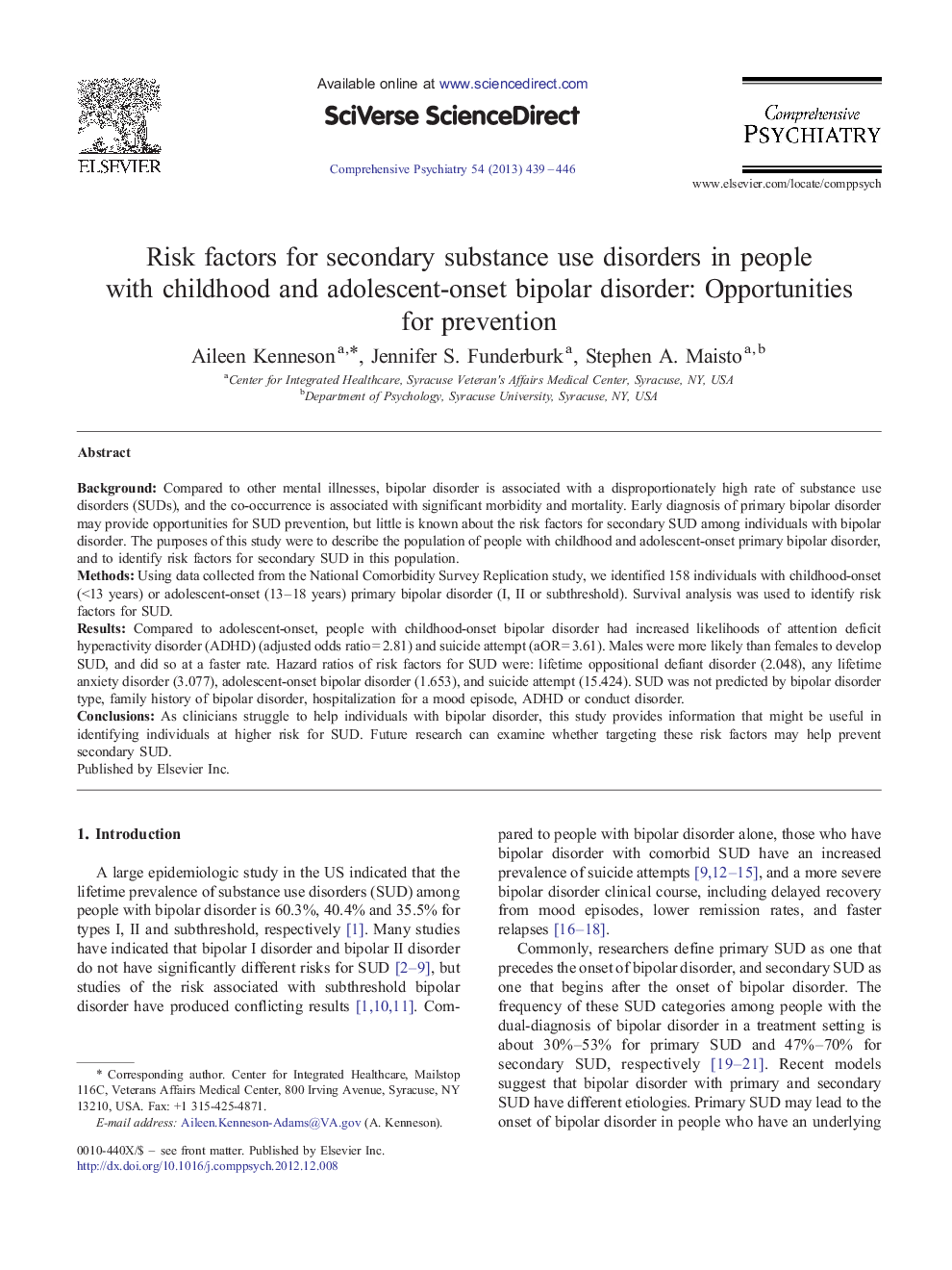| کد مقاله | کد نشریه | سال انتشار | مقاله انگلیسی | نسخه تمام متن |
|---|---|---|---|---|
| 316445 | 537729 | 2013 | 8 صفحه PDF | دانلود رایگان |

BackgroundCompared to other mental illnesses, bipolar disorder is associated with a disproportionately high rate of substance use disorders (SUDs), and the co-occurrence is associated with significant morbidity and mortality. Early diagnosis of primary bipolar disorder may provide opportunities for SUD prevention, but little is known about the risk factors for secondary SUD among individuals with bipolar disorder. The purposes of this study were to describe the population of people with childhood and adolescent-onset primary bipolar disorder, and to identify risk factors for secondary SUD in this population.MethodsUsing data collected from the National Comorbidity Survey Replication study, we identified 158 individuals with childhood-onset (<13 years) or adolescent-onset (13–18 years) primary bipolar disorder (I, II or subthreshold). Survival analysis was used to identify risk factors for SUD.ResultsCompared to adolescent-onset, people with childhood-onset bipolar disorder had increased likelihoods of attention deficit hyperactivity disorder (ADHD) (adjusted odds ratio = 2.81) and suicide attempt (aOR = 3.61). Males were more likely than females to develop SUD, and did so at a faster rate. Hazard ratios of risk factors for SUD were: lifetime oppositional defiant disorder (2.048), any lifetime anxiety disorder (3.077), adolescent-onset bipolar disorder (1.653), and suicide attempt (15.424). SUD was not predicted by bipolar disorder type, family history of bipolar disorder, hospitalization for a mood episode, ADHD or conduct disorder.ConclusionsAs clinicians struggle to help individuals with bipolar disorder, this study provides information that might be useful in identifying individuals at higher risk for SUD. Future research can examine whether targeting these risk factors may help prevent secondary SUD.
Journal: Comprehensive Psychiatry - Volume 54, Issue 5, July 2013, Pages 439–446